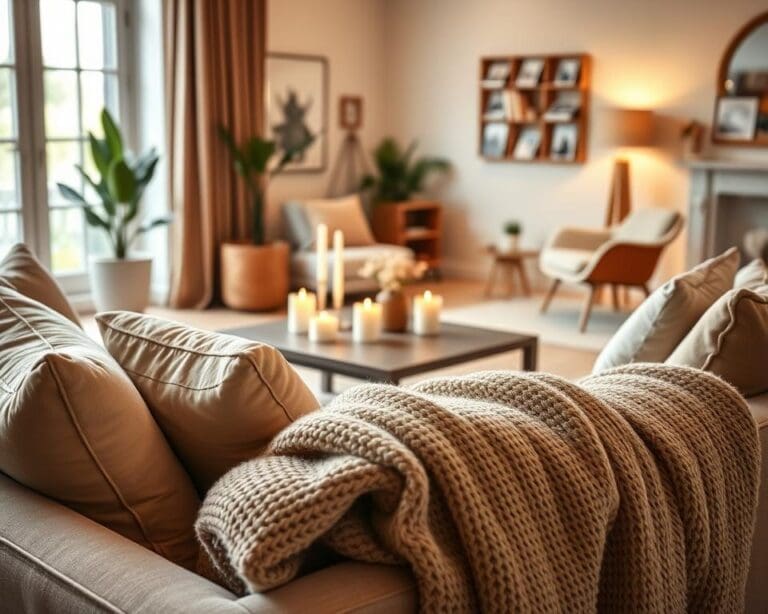Designing a home that is welcoming and functional for families requires careful planning and consideration. A family-friendly home is not just about aesthetics; it’s about creating a safe, comfortable, and functional space that promotes well-being and happiness.
To achieve this, it’s essential to incorporate kid-friendly decor and thoughtful home design for families. This includes considering the needs of all family members and creating a space that is both beautiful and functional.
Key Takeaways
- Prioritize safety and comfort in your home design
- Incorporate kid-friendly decor to create a welcoming space
- Consider the needs of all family members when designing your home
- Create a functional space that promotes well-being and happiness
- Balance aesthetics with functionality in your home design
Creating a Home That Works for Everyone
The key to a harmonious home lies in its ability to blend style with practicality. When designing a living space, it’s essential to strike a balance between aesthetics and functionality to cater to the diverse needs of family members.
Balancing Style and Functionality
A home that is both beautiful and functional requires careful planning. To achieve this balance, consider the following:
- Multipurpose Furniture: Invest in furniture pieces that serve more than one purpose, such as storage ottomans or coffee tables with built-in storage.
- Durable Materials: Choose materials and finishes that are not only visually appealing but also durable and easy to maintain.
For instance, a well-designed living room might include a stylish sectional sofa that is also stain-resistant and easy to clean. As
“Good design is about more than just aesthetics; it’s about creating a functional space that improves your quality of life.”
, says a renowned interior designer.
| Design Element | Style Consideration | Functionality Consideration |
|---|---|---|
| Furniture | Aesthetics, comfort | Durability, multipurpose use |
| Materials | Visual appeal, texture | Ease of maintenance, durability |
Involving the Whole Family in Design Decisions
Involving every family member in the design process ensures that the final product meets everyone’s needs and preferences. Here are some tips to achieve this:
- Hold family meetings to discuss design ideas and gather input from all members.
- Create a mood board or Pinterest board to visualize different design elements and styles.
- Consider the needs and preferences of each family member, from children to grandparents.
By doing so, you can create a home that is not only beautiful but also functional and enjoyable for everyone. As the saying goes, “A house is made of walls and beams; a home is made of love and dreams.”
Inspiratie voor een gezinsvriendelijk huis: Key Principles
To build a home that truly supports family life, it’s crucial to focus on the fundamental principles that promote safety, durability, and flexibility. A well-designed home can make a significant difference in the daily lives of family members, providing a comfortable and secure environment that adapts to their changing needs.
Safety First Approach
Ensuring the safety of family members, especially children, is paramount. This involves implementing various measures to prevent accidents and injuries within the home. A safety-first approach includes childproofing and addressing potential hazards that might not be immediately apparent.
Childproofing Essentials
Childproofing is a critical aspect of creating a safe home environment. This includes installing safety gates at the top and bottom of stairs, securing heavy furniture and appliances to walls, and using outlet covers to prevent electrical shock. Additionally, cabinets and drawers should be equipped with safety latches to prevent children from accessing harmful substances or sharp objects.
Hidden Hazards to Address
Beyond the obvious safety measures, there are hidden hazards to consider. For example, ensuring that windows have locks to prevent falls, and using non-toxic materials for flooring and furniture. It’s also important to keep emergency numbers handy and have a first-aid kit readily available.
Durability and Easy Maintenance
A durable home design is not only cost-effective but also reduces the stress associated with frequent repairs. Choosing materials and finishes that are easy to clean and maintain can significantly impact the quality of family life. For instance, opting for hardwood floors instead of carpet can reduce allergens and make cleaning easier.
Flexibility for Growing Families
Families grow and change, and their homes should be able to adapt. Designing spaces that can serve multiple purposes or be easily reconfigured as needed is key. For example, a home office can double as a homework station, or a playroom can be designed to evolve into a teenager’s hangout space.
By focusing on these key principles—safety, durability, and flexibility—families can create a home environment that is not only comfortable and secure but also supportive of their growth and well-being.
Family-Friendly Living Room Ideas
A family-friendly living room should be a space where everyone can relax, play, and spend quality time together. It’s about creating an environment that is both comfortable and durable, capable of withstanding the wear and tear of daily family life.
Comfortable and Durable Furniture Choices
Choosing the right furniture is crucial for a family-friendly living room. Opt for pieces that are not only comfortable but also durable. Consider stain-resistant fabrics and hard-wearing materials that can withstand spills and rough handling. For instance, a sectional sofa with removable covers can be a practical choice.
As interior design experts suggest, incorporating multi-functional furniture can also enhance the room’s functionality. For example, a storage ottoman can serve as both a seat and a storage unit.
Storage Solutions for Toys and Games
Adequate storage is essential for keeping the living room tidy and organized. Invest in storage solutions such as baskets, bins, and shelves that can hold toys, games, and other family items. Labeling these storage units can also help teach children the importance of putting things back in their place.
“A clutter-free living room is not just about aesthetics; it’s also about creating a peaceful environment for relaxation and play.”
Creating Zones for Different Activities
Creating different zones within the living room can help cater to various family activities. This can include media areas for watching TV or movies, and play spaces for younger children.
Media Areas
A media area can be as simple as a cozy corner with a TV and comfortable seating, or as elaborate as a home theater setup. Ensure that the area is comfortable and has adequate seating for the whole family.
Play Spaces
For families with young children, a designated play space can be a lifesaver. This could be a corner with a playmat, a small table for crafts, or even a reading nook. The key is to create a safe and inviting area that encourages play and creativity.
| Zone | Activities | Furniture/Elements |
|---|---|---|
| Media Area | Watching TV, movie nights | Comfortable seating, TV, sound system |
| Play Space | Playing, reading, crafts | Playmat, small table, reading nook |
By incorporating these ideas, you can create a living room that is not only family-friendly but also a warm and welcoming space for everyone.
Kid-Proof Kitchen Designs
Creating a kitchen that withstands the chaos of family life requires careful planning. A kid-proof kitchen is designed to be safe, functional, and easy to maintain, even with the hustle and bustle of family activities.
Safe Layout and Appliance Placement
A safe layout is crucial in a kid-proof kitchen. This involves strategically placing appliances and fixtures to minimize hazards. For instance, installing appliances with safety locks and placing them at a comfortable height can prevent accidents. The kitchen island or peninsula can also serve as a barrier between the cooking area and the rest of the kitchen, helping to keep children away from hot stoves and sharp objects.
Smart appliance placement is key. Consider a layout where the stove or cooktop is positioned away from high-traffic areas and is equipped with a safety lock to prevent accidental ignition. Additionally, ensure that electrical outlets are out of reach or secured with tamper-resistant outlet covers.
Easy-Clean Surfaces and Materials
Easy-clean surfaces are a must in a kid-friendly kitchen. Choosing materials that are resistant to stains and scratches can make a big difference. For countertops, consider durable, low-maintenance options like quartz or granite. For flooring, hardwood or porcelain tile can be both stylish and practical.
When it comes to cabinets, soft-close drawers and doors can help prevent pinched fingers, while also keeping the kitchen quieter. Cabinets made from materials that are easy to clean, such as painted wood or laminate, are also a good choice.
Incorporating Kid-Friendly Eating Areas
Incorporating a kid-friendly eating area into your kitchen design can make mealtime more enjoyable for the whole family. Consider a breakfast nook or a built-in banquette with storage underneath for toys or dining essentials.
Homework-Friendly Kitchen Spaces
With more families having children participate in virtual learning, a homework-friendly kitchen space can be a valuable addition. This could be as simple as a designated homework spot with good lighting and a comfortable place to sit, or as elaborate as a built-in desk or study area.
Accessible Snack Stations
Making snacks accessible to kids can encourage healthy eating habits and independence. Consider a lower cabinet or drawer dedicated to snacks, equipped with easy-to-use handles and dividers to keep things organized.
Designing Bedrooms for Children of All Ages
As children grow, their bedroom needs change, making it essential to design a space that can adapt to their different stages of development. A well-designed bedroom can significantly impact a child’s quality of life, providing a comfortable and functional space for rest, play, and study.
Adaptable Furniture That Grows with Your Child
Investing in adaptable furniture is crucial for creating a bedroom that evolves with your child. Consider furniture pieces that can serve multiple purposes, such as a crib that converts into a toddler bed and eventually into a full-size bed. This approach not only saves money but also reduces waste and the need for frequent replacements.
For example, a desk with storage can grow with your child, providing a dedicated space for homework and projects. Look for furniture with adjustable heights and modular designs to ensure it remains functional as your child grows.
Storage Ideas for Toys and Clothes
Effective storage solutions are vital in maintaining a clutter-free and organized bedroom. Utilize a combination of open shelving, drawers, and closets to keep toys, clothes, and personal items organized. Consider incorporating bins and baskets that can be labeled and easily accessed by your child, promoting independence and tidiness.
For younger children, storage solutions like toy chests and cubbies can be both functional and fun, teaching them the importance of putting away their belongings.
Creating Spaces for Sleep, Play, and Study
A child’s bedroom should cater to various activities, including sleep, play, and study. Creating distinct zones within the room can help achieve this. For instance, a cozy reading nook can encourage a love for reading, while a dedicated play area can keep toys and games organized.
For older children, a study area with good lighting and ergonomic furniture can support their academic needs. Consider using room dividers or curtains to define different spaces within the room.
Shared Bedroom Solutions
When designing a shared bedroom, it’s essential to consider the needs and preferences of each child. Using bunk beds or twin beds with storage drawers underneath can be an efficient way to maximize space. Ensure that each child has their own dedicated area for personal items and study.
Personalization Opportunities
Allowing children to personalize their bedroom can make the space feel truly theirs. Encourage them to express their personality through wall art, bedding, and decorative items. This not only fosters a sense of ownership but also helps in developing their identity.
| Furniture/Feature | Benefits | Age Adaptability |
|---|---|---|
| Convertible Crib | Saves money, reduces waste | 0-10 years |
| Desk with Storage | Promotes organization, supports homework | 5+ years |
| Bunk Beds | Maximizes space, fun for kids | 6+ years |
| Adjustable Shelving | Adapts to changing storage needs | All ages |
Multi-Purpose Spaces for Busy Families
As families juggle various activities, multi-purpose spaces become essential. These versatile areas can adapt to different needs, making family life more manageable and enjoyable. In this section, we’ll explore how to create effective multi-purpose spaces that cater to the diverse requirements of busy families.
Home Office and Homework Stations
A well-designed home office can be a game-changer for families with working parents or students. Combining a home office with a homework station can enhance productivity and keep children organized. Consider using a large desk with built-in storage or a modular furniture system that can be adjusted as your children grow.
To make this space effective, ensure it has good lighting, comfortable seating, and minimal distractions. Incorporating ergonomic furniture and technology, such as a printer and scanner, can also boost functionality.
Playroom and Guest Room Combinations
For families who frequently host guests, combining a playroom with a guest room is a practical solution. Using multi-functional furniture like a sofa bed or storage ottomans can help achieve this. Consider a room divider to separate the play area from the sleeping area, creating a sense of privacy for guests.
When designing this space, think about the flow and how different family members will use it. Incorporating elements like a Murphy bed or a desk that doubles as a play table can maximize the room’s potential.
Laundry Rooms That Work Harder
A laundry room is more than just a space for washing clothes; it can be a multi-purpose area that helps with daily chores. Adding a folding station, ample storage for laundry supplies, and a sink for hand-washing delicate items can make this room more efficient.
To further enhance the laundry room’s functionality, consider installing shelves or cabinets for storing cleaning supplies and linens. A laundry sorter or a built-in ironing board can also streamline the laundry process.
Bathroom Solutions for Families
A well-designed bathroom can make a significant difference in the daily routine of a busy family. It’s a space that requires careful planning to ensure it meets the needs of every family member, from young children to adults. In this section, we will explore key bathroom solutions that prioritize safety, functionality, and ease of maintenance.
Safety Features for Young Children
Safety is a top priority when it comes to bathroom design for families with young children. Installing anti-scald devices on faucets and showerheads can prevent accidental burns. Additionally, non-slip flooring and grab bars can help prevent slips and falls. It’s also essential to secure any heavy furniture or appliances to the walls to prevent them from tipping over.
- Install anti-scald devices on faucets and showerheads
- Use non-slip flooring and mats
- Secure heavy furniture and appliances to walls
Storage for Multiple Users
Adequate storage is crucial in a family bathroom to keep it organized and clutter-free. Consider installing multiple-tiered storage units or cabinet organizers to maximize space. Labeling storage bins can also help keep each family member’s belongings organized.
- Assess your storage needs based on the number of users
- Choose storage solutions that fit your bathroom’s layout
- Label storage bins for easy access
Easy-Clean Materials and Fixtures
Choosing the right materials and fixtures can make a big difference in maintaining a clean bathroom. Opt for water-resistant surfaces and easy-clean fixtures to reduce maintenance. Consider using a shower curtain or door that is easy to clean and dry quickly.
Morning Rush Traffic Management
Managing morning rush traffic in the bathroom can be challenging. Consider installing a double sink or a separate shower and bathtub to reduce congestion. Encouraging family members to prepare their toiletries and clothes the night before can also help streamline the morning routine.
Bath Time Efficiency Tips
Making bath time more efficient can be achieved by having all necessary supplies within easy reach. Use a bath caddy or storage bin to keep toys, washcloths, and other essentials organized. Consider a bathtub with a built-in seat or a non-slip mat to enhance safety during bath time.
Creating Functional Outdoor Spaces
Creating a functional outdoor space is about more than just aesthetics; it’s about crafting an area that meets the diverse needs of your family. Outdoor spaces can serve as an extension of your home, providing areas for recreation, relaxation, and socialization.
Safe Play Areas for Different Age Groups
When designing outdoor spaces, safety is a paramount concern, especially for families with children. Creating safe play areas that cater to different age groups is essential. For younger children, soft landing surfaces like wood chips or rubber mulch under play structures can help prevent injuries. For older children and teenagers, incorporating areas for sports and activities, such as basketball courts or skate parks, can be a great way to keep them engaged and active.
It’s also important to consider the visibility of play areas from inside the house to ensure that children are always within sight. Installing safety gates around pools or ponds and securing any heavy outdoor furniture or decorations are additional measures to enhance safety.
Family-Friendly Landscaping Ideas
Landscaping plays a crucial role in creating an inviting and functional outdoor space. Choosing plants that are durable and require minimal maintenance can be beneficial for busy families. Incorporating native plants can also reduce the need for frequent watering and care. Additionally, creating pathways and defining different areas within the yard can enhance the usability of the space.
- Use durable, child-friendly materials for pathways and play areas.
- Incorporate plants that are non-toxic to children and pets.
- Consider the mature size of plants to avoid overcrowding.
Outdoor Dining and Gathering Spaces
Outdoor dining and gathering spaces are perfect for creating memories with family and friends. When designing these areas, consider the layout and the flow of traffic. A well-placed outdoor dining table and comfortable seating can make mealtime enjoyable. Adding features like outdoor kitchens or fire pits can extend the usability of these spaces into the evening and different seasons.
To make these areas more inviting, incorporate ambient lighting, comfortable furnishings, and decorative elements that reflect your personal style.
| Feature | Benefits | Considerations |
|---|---|---|
| Outdoor Kitchen | Enhances dining experience, allows for cooking outdoors | Requires plumbing and electrical planning |
| Fire Pit | Extends outdoor living into cooler months, creates a cozy ambiance | Needs safe placement away from flammable materials |
| Ambient Lighting | Improves safety, creates a welcoming atmosphere | Consider energy efficiency and durability |
Conclusion: Building a Home That Grows With Your Family
Creating a family-friendly home is a thoughtful process that involves balancing style, functionality, and safety. By incorporating the principles and ideas discussed in this article, families can design a home that adapts to their changing needs, promoting well-being and happiness.
A well-designed home should be both beautiful and functional, meeting the diverse needs of family members. From safe and durable materials to flexible layouts, a family-friendly home design for families prioritizes comfort, practicality, and aesthetics.
By considering the unique needs of your family and incorporating elements like multi-purpose spaces, kid-friendly features, and outdoor areas, you can create a home that supports your family’s lifestyle and grows with your children. This thoughtful approach to home design can lead to a more harmonious and enjoyable living environment.
Ultimately, a family-friendly home is one that is designed with the family’s needs at its core, providing a nurturing space that fosters connection, creativity, and happiness.








